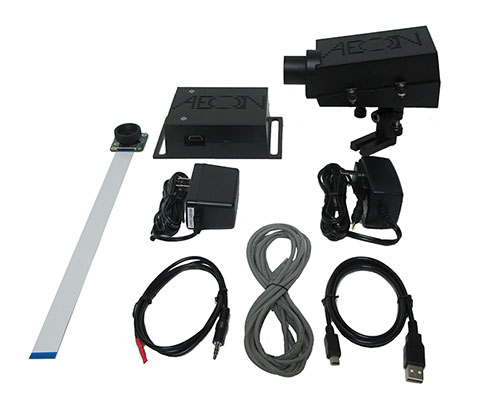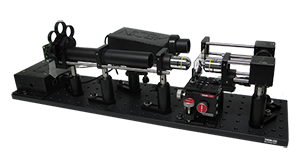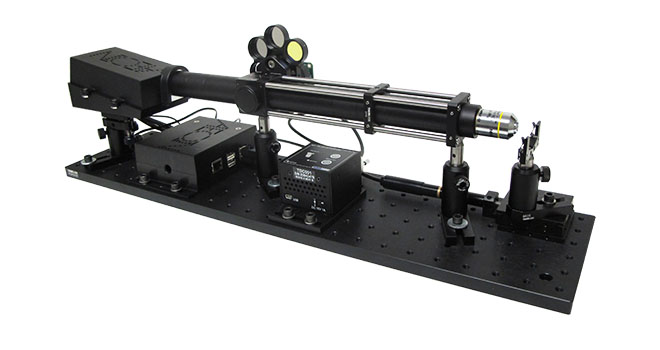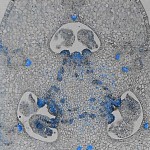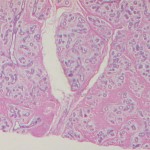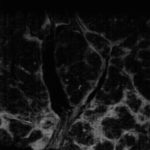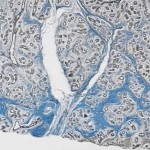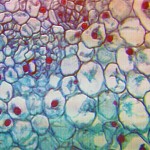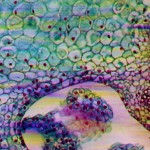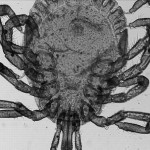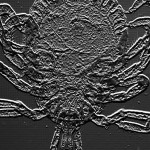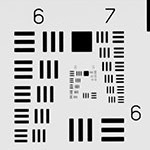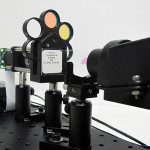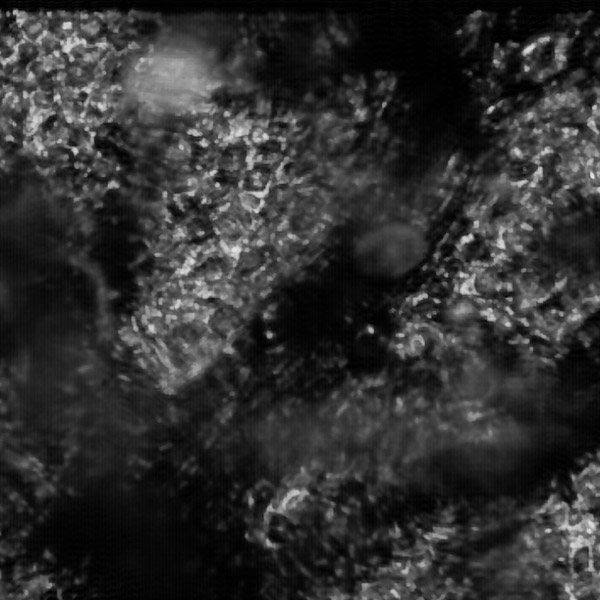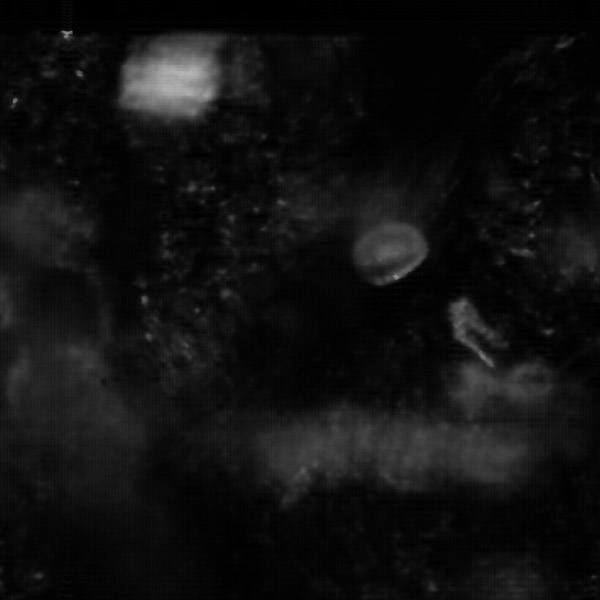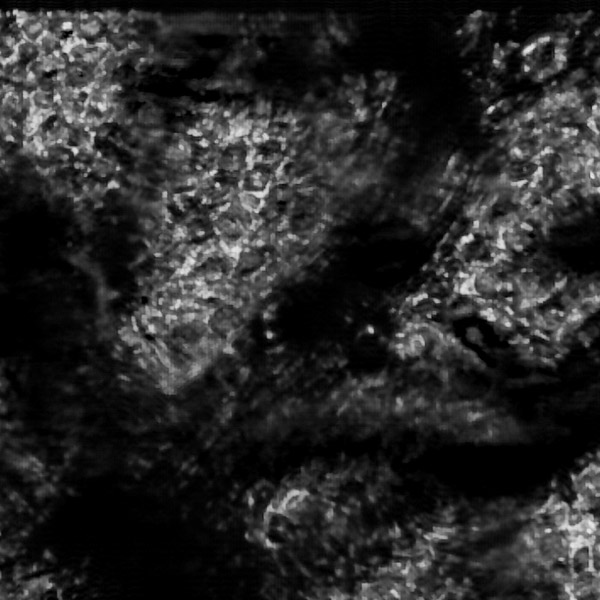Using Aeon’s Essentials Kit, customized and modular imaging systems can be easily built for bright-field, dark-field, differential contrast, and fluorescence microscopy. Get the Essentials, then pick from thousands of compatible opto-mechanical building-blocks offered by Edmund Optics® and Thorlabs® and build Aeon's latest imaging technology into your microscope.
Not ready to go it alone? Aeon Imaging has developed starter microscope kits to get you up and imaging. Customize your microscope, receive the parts, and assemble using our complete step-by-step instructions.
How Does it Work?
Our patented DLM technology uses a digital light projector for target illumination instead of the more traditional laser source and scanning element(s). The projector rapidly illuminates the target with a sequence of lines that is directly imaged (i.e. without descanning) onto a CMOS sensor with rolling shutter detection. By spatially and temporally synchronizing the illumination lines to the CMOS rolling shutter, the rolling shutter acts as a flexible electronic confocal aperture that can be adjusted in width and position with pixel-level accuracy from frame-to-frame.
Check out all the details in our Technology section.
Explore...
Fluorescence Microscopy
Aeon’s DLM seamlessly switches between red, green, or blue illumination LEDs. With the addition of excitation and emission filters, sample fluorescence can be readily measured.
Differential Contrast Microscopy
Achieved by alternating the confocal aperture width every other frame through software. By subtracting a narrow aperture image from a wide aperture one, image edges are emphasized, creating an effect similar to differential interference contrast microscopy.
RGB Illumination using your own Objectives
Use your own microscope objectives with imaging in epi-illumination mode to achieve high magnification
Perform... Axial Depth Sectioning
Aeon Imaging’s DLM Essentials Kit is pre-configured for confocal imaging using a sequence of single line patterns that collectively illuminate the field of view. By narrowing the shutter width, defocused light from outside the focal volume is removed from the image.
Rather than image with very narrow aperture widths (e.g. a shutter width of less than 10 pixels), which can cause ‘light-starved’ conditions, similar axial depth sectioning can be achieved using dual line illumination patterns uploaded into the DLP LightCrafter. The camera is then configured to acquire a pair of images and compute their difference.
The primary image has the rolling shutter synchronized with one of the projected lines, as in standard imaging. The secondary image positions the rolling shutter between the projected line pairs, with a shutter width that minimizes the light return from an in-focus target. When the difference between primary and secondary images is computed, the light returning from in-focus regions of the target will be minimally affected, while undesired light from outside the focal volume is rejected.
A “z-stack” series of bright-field and subtracted images of a leaf target is shown below. At a single depth position, the image of the leaf in bright-field (A), dark-field (B), and subtracted (C = A-B) is shown. As expected, the dark-field image is comprised of unwanted out-of-focus light that is removed during image subtraction.
To quantify the effectiveness of this approach, the point-spread function was measured using Aeon Imaging’s DLM kit, set up in reflectance mode with a 10X 0.25NA objective. The blue bright-field point-spread function shows the depth sectioning achieved with a 20 pixel shutter width. The green dark-field point spread function shows the intensity profile obtained when the shutter is placed between the projected line patterns. The red subtracted image substantially narrows the point-spread function, and enhances the optical slicing capability of the microscope.
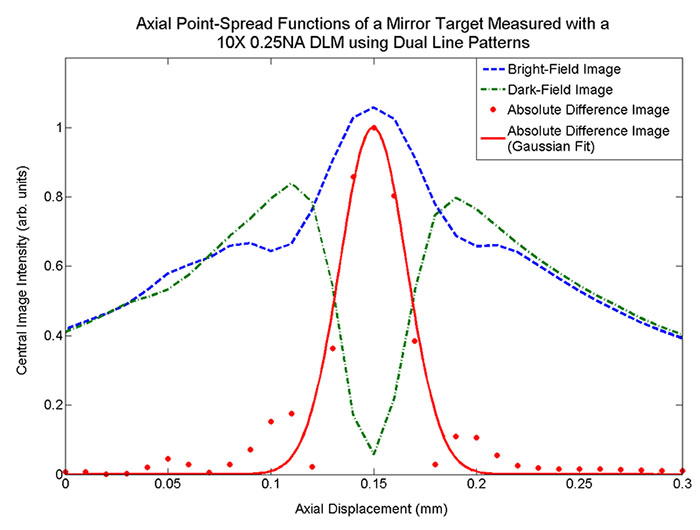
DLM Essentials Kit
What's included:
- Texas Instruments' DLP® LightCrafter™ Evaluation Module with power and USB cables
- Projector mounting platform and focusing optics required to match the illumination and detection field sizes
- IDS 5MP CMOS rolling shutter camera (UI-3480CP Rev. 2) with USB 3.0 and GPIO camera cables
- Arduino Uno microcontroller with custom timing synchronization circuit board 'cape'
- Instructions to get started with your kit, including a sample illumination pattern configuration, synchronization code, and an image viewer program.
Questions? Please contact us and we'll be happy to discuss your application and needs.
